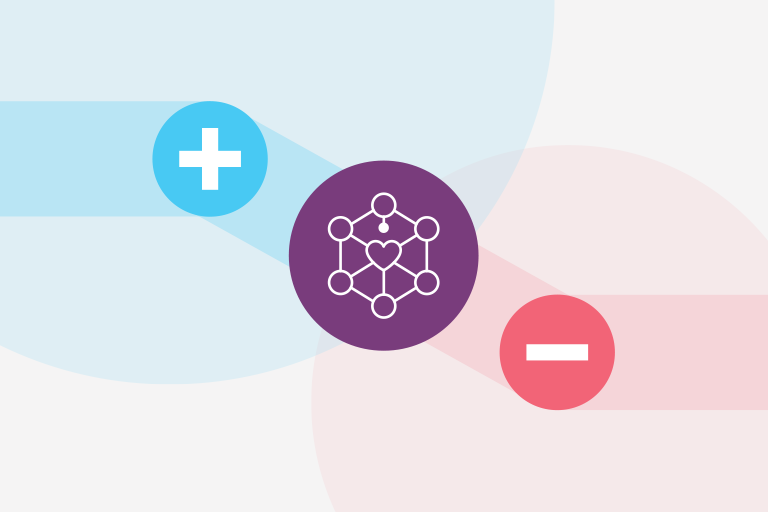It’s safe to say that marketing today looks quite different than it has in the past—or even just a year ago. Technological advancements and market changes have created a more connected and knowledgeable customer—one that desires to be seen and heard by the brands they love.
Customers increasingly expect brands to understand them as humans and deliver individualized, empathetic experiences in relation to their lifestyles and preferences. Brands that are able to convey genuine human connections and empathy across their digital messaging will be the ones who retain customers, gain new ones and turn them all into brand advocates.
Simply put, providing human-centered customer experiences is the key to connecting with your customers and understanding them as individuals. One of the quickest ways to do just that is Brand Affinity™, our intelligent personalization solution powered by Iterable AI.
Brand Affinity helps marketers understand their customers beyond their discrete actions and tune into their customers’ feelings. It gives you a holistic look at engagement across all of your messaging and calculates a score that indicates how likely each contact is to interact with future marketing messages. We then pipe the data through our AI and label each of your customers with either a loyal, positive, neutral, negative or unscored based on how engaged they are with your brand’s messaging.
Understanding sentiment can be challenging, but with Brand Affinity it becomes exponentially easier. We’ve compiled a few examples below of how you can leverage Brand Affinity to intelligently translate customer engagement across channels into deeper, more meaningful connections with your customers.
Leveraging Brand Affinity for a Better Customer Experience
1. Improving Customer Retention and Loyalty
They say customer retention is the new acquisition. Brand Affinity is designed to help brands maximize retention with their most loyal customers while mitigating against churn with at-risk users.
For example, imagine you’re a retailer gearing up for your annual summer sale and looking to send out an exclusive offer to your VIPs as a little something extra to say thank you. Inside Iterable’s segmentation engine, you can build out criteria to generate the precise list you’re looking for. These criteria can be tailored to your needs, but here’s an example of what it could look like:
- Customers who are 18 years or older
- Those with an LTV greater than $500
- With a least 1 purchase in the last 180 days
- And with the loyal Brand Affinity label, showing that they’re actively tuned into your regular messaging
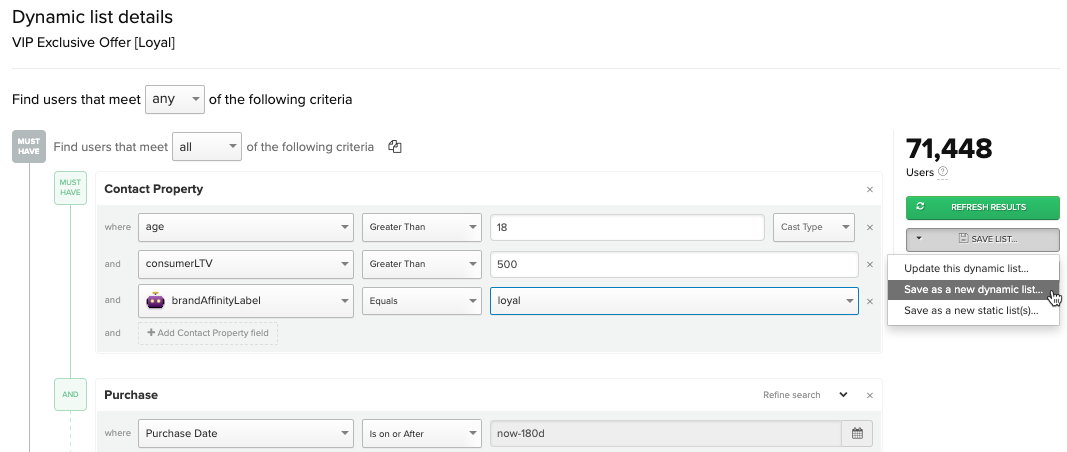

The Brand Affinity filter allows your segmentation to reach new levels of granularity.
With the Brand Affinity filter, we have added in an extra sentimental layer that intelligently translates customer engagement into a dynamic contact property. Now, this target group is exclusively focused on customers who are regularly engaging with the brand and true advocates. By saving this audience as a dynamic list, you can ensure anyone that meets the criteria at the time of send receives this special offer.
Now, let’s say you are a subscription-based company that relies on annual memberships and recurring revenue. Customer retention and mitigating churn are critical for your business to increase customer lifetime value. By leveraging Brand Affinity’s neutral and negative labels, you can zero in on customers who have disengaged with your messaging and are at risk of churn.
Using Workflow Studio, you can create and automate a monthly triggered workflow to deliver nurture campaigns to re-engage customers using a split node with Brand Affinity.


Segmenting by Brand Affinity labels like “neutral” or “negative” can be just as valuable for LTV as “loyal” and “positive.”
Increasing LTV is a key indicator of a successful customer experience. Using Brand Affinity to more closely segment your customers to their sentiment ensures a positive impact on your retention and loyalty metrics.
2. Increasing Transactional Conversions for Mobile
Retaining customers for continued engagement is important and useful, but transactional conversions are—in many cases—the goal. Brand Affinity is also incredibly useful in driving conversions.
Let’s say you’re a mobile app services company focused on retaining active customers with the app and driving incremental orders. With a majority of transactions and engagement taking place on mobile devices within your app, you can use Brand Affinity to power intelligent and personalized push messages to increase order rates, lower uninstalls and increase transactional conversions.
One way to do this is through an event workflow triggered by a cart abandonment. Using a similar split node to the last use case, you can deliver a timely push message to loyal and positive affinity customers with an incentivized offer, while sending a nurture email to those users who may not be as engaged with your mobile marketing messaging.
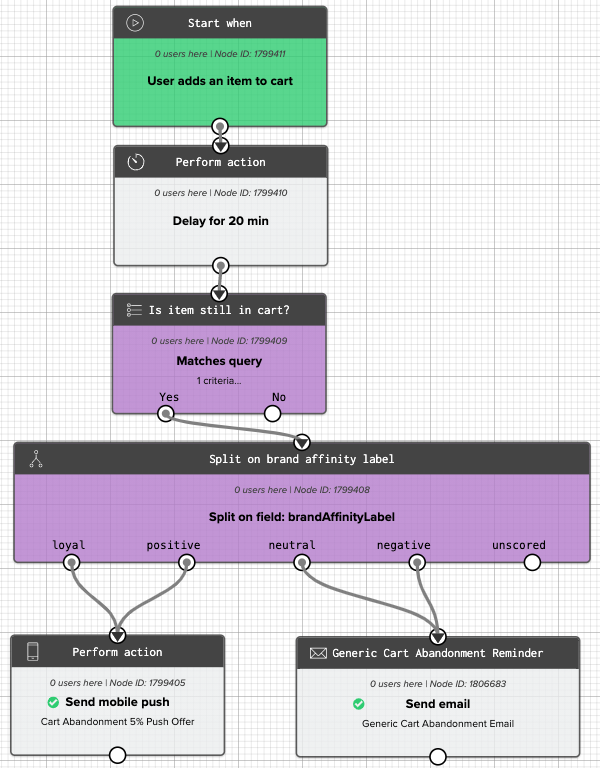

Brand Affinity labels are another way to tailor your messaging, creating a more personalized experience.
In doing so, you are ensuring customers receive relevant messages via the channels that work best for them based on their sentiment and engagement levels.
3. Repairing Deliverability Issues
Nobody wants to end up in the spam folder. At the very least, you want your audience to see your message. In that vein, Brand Affinity can help resolve deliverability and sender reputation issues that cause emails to be blocked or placed in that dreaded spam folder.
Maybe you’re a media company that heavily relies on email as a channel to drive revenue and you suddenly see open rates drop for Gmail, which comprises more than 60% of your active email audience.
One of the more tried and true tactics to improve deliverability is to focus on your most active and engaged users to boost your positive reputation and help shift the mailbox provider’s sophisticated algorithms perception of your emails.
With Brand Affinity, you can create an audience segment for Gmail users who have either a neutral, negative or unscored affinity label and save it as a dynamic list to exclude these users from campaigns where this suppression list is applied.
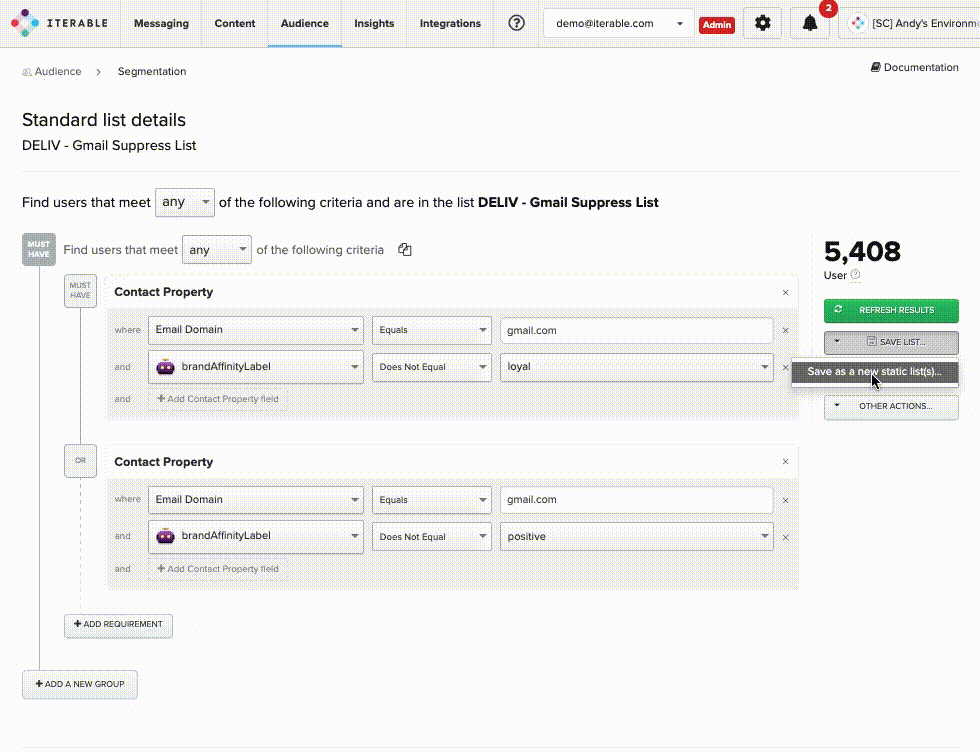

Strategic segmentation such as this can greatly improve your deliverability and reputation, making it easier to retain customers.
By holding out Gmail users who are disengaging with your messaging, you increase the likelihood of improving your positive engagement signals and resolving your Gmail spam issue.
4. Individualizing Campaign Content Experience
Dynamic content is key pillar of personalizing the customer experience. Not all content is relevant for everyone in your database.
Since Brand Affinity is used to fill out the user profile, it can be applied anywhere in the Iterable platform that other user profile fields can be used, including personalizing campaign experiences through dynamic content.
Imagine you are a travel and hospitality company that focuses on personalizing message content to match customers with experiences. Inside our message builder, you can create different experiences to offer your customers within the same campaign by incorporating affinity labels into conditional logic.
In this example below, you could offer an extra 15% off your next booking for loyal and positive customers while creating a fallback offer for all other affinity customers.
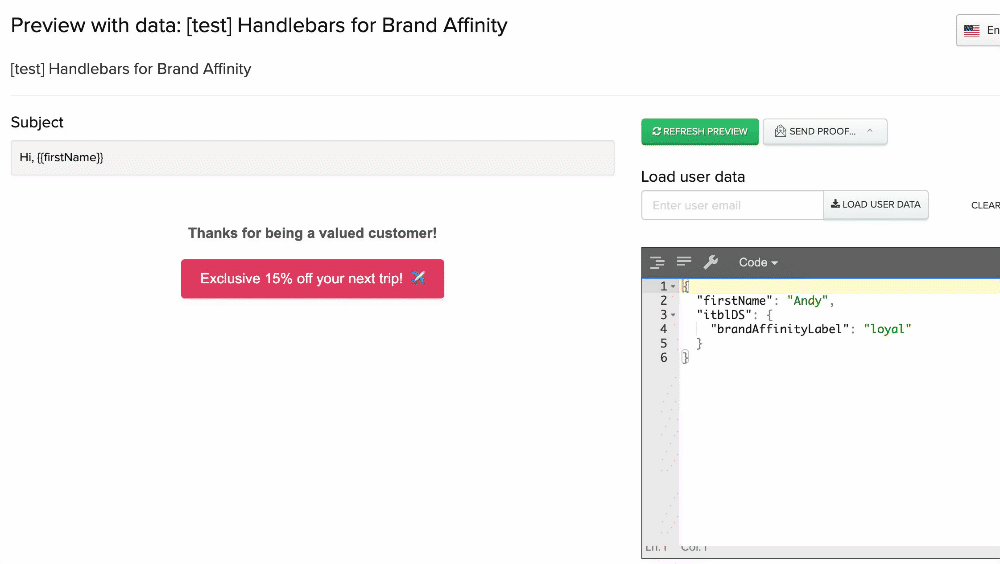

Personalization based on sentiment can drive increased conversions and engagement across the spectrum of your audience.
By incorporating Brand Affinity into dynamic content strategies, brands can easily create more personalized customer experiences to deliver the right content based on customer sentiment.
Versatility at Your Fingertips
We want to bring the power of Iterable AI to your fingertips, so we have intentionally designed Brand Affinity to be integrated across the Iterable platform to deliver highly personalized experiences at every stage of the customer journey.
The examples above are just the tip of the iceberg. There are numerous ways to take advantage of Brand Affinity to easily personalize customer experiences at every stage of the lifecycle. It’s only limited by the ways in which sentiment factors into your customer experience strategies!
If you would like to learn more about Brand Affinity or any of Iterable’s AI products, please contact your Customer Success Manager or visit iterable.com/ai for more information and schedule a demo.































